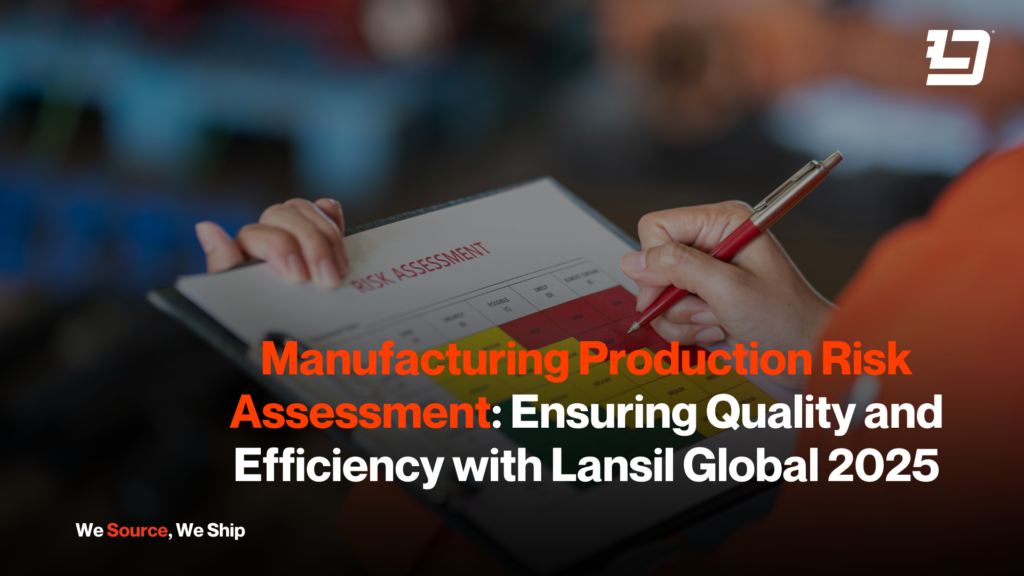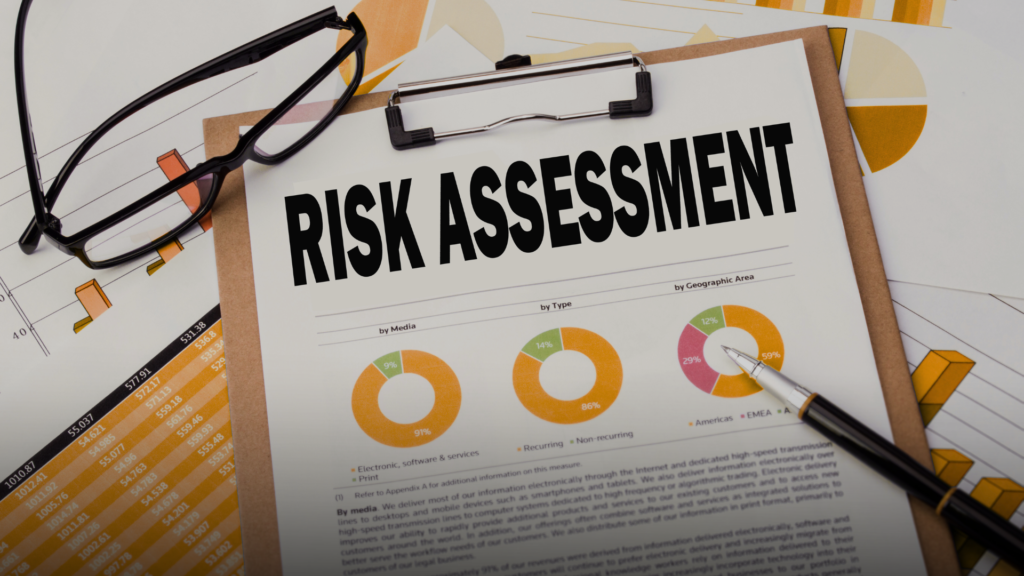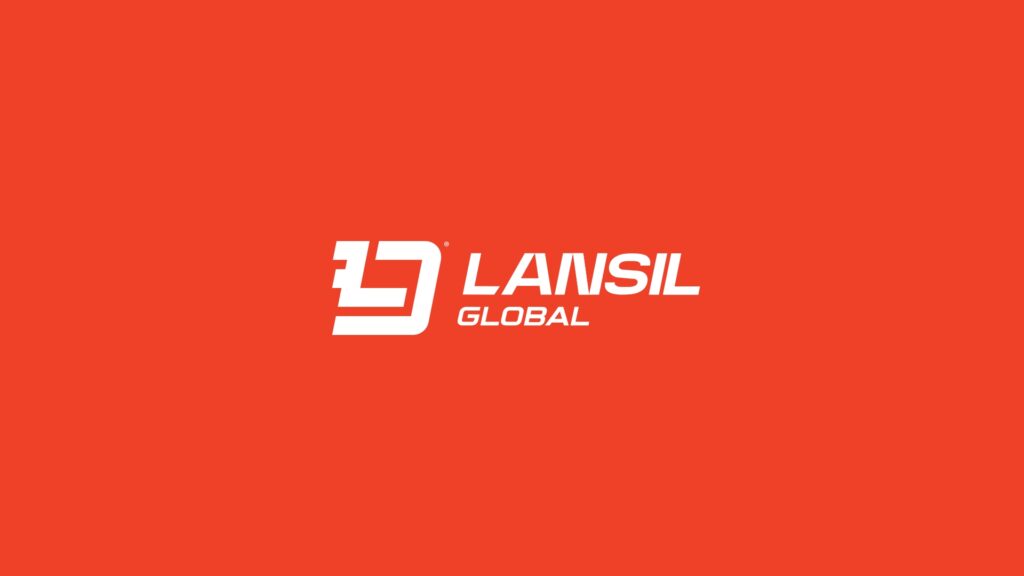
Introduction
In the intricate dance of modern manufacturing, where precision meets global reach, manufacturing production risk assessment emerges as a critical discipline. It is a structured, systematic process designed to identify, meticulously analyze, and proactively mitigate the myriad of risks that could potentially derail production schedules, compromise the integrity of product quality, or escalate operational costs. In an era defined by rapid technological advancements and an increasingly interconnected, yet volatile, globalized economy, businesses face an unprecedented array of unforeseen disruptions. These disruptions, ranging from supply chain bottlenecks and geopolitical uncertainties to regulatory shifts and technological failures, can have profound and far-reaching consequences. Therefore, companies can no longer afford to be reactive; they must adopt a proactive, forward-thinking approach to risk management. This involves not only identifying potential hazards but also understanding their potential impact and implementing robust strategies to minimize their effects.
To maintain operational stability amidst these challenges, uphold the stringent quality standards demanded by today’s consumers, and optimize costs in a fiercely competitive market, a comprehensive manufacturing production risk assessment is indispensable. This assessment provides a clear roadmap for navigating potential pitfalls, enabling businesses to anticipate and address issues before they escalate into costly crises. It allows for the development of contingency plans, the diversification of supplier networks, and the implementation of enhanced quality control measures, all of which contribute to a more resilient and efficient manufacturing operation.
Recognizing the critical importance of effective risk management, Lansil Global has positioned itself as a specialist in manufacturing production risk assessment. We offer tailored solutions designed to meet the unique needs of businesses operating in diverse industries and geographical regions. Our expertise extends across all facets of the manufacturing process, from sourcing and production to logistics and quality control. By leveraging our deep industry knowledge, strategic partnerships, and advanced analytical tools, Lansil Global empowers manufacturers to operate with confidence and efficiency. We enable businesses to transform potential threats into strategic advantages, ensuring they can navigate the complexities of the global marketplace with agility and resilience. With Lansil Global as your partner in manufacturing production risk assessment, you gain not just a service provider, but a strategic ally committed to your long-term success.
Table of Contents
- What’s Manufacturing Production Risk Assessment?
- Examples of Risks in Manufacturing
- Elements of a Risk Assessment Checklist
- Key Risks in Manufacturing Production and How to Mitigate Them
- Why Choose Lansil Global for Manufacturing Production Risk Assessment?
- Conclusion
1. What’s Manufacturing Production Risk Assessment?

Manufacturing production risk assessment is a systematic and proactive process that aims to identify, analyze, and evaluate potential threats that could disrupt or negatively impact a company’s manufacturing operations. This critical process goes beyond simply acknowledging potential problems; it involves a deep dive into understanding the likelihood and severity of various risks, enabling businesses to develop and implement effective mitigation strategies. In today’s complex and interconnected global economy, manufacturers face a myriad of challenges, ranging from supply chain vulnerabilities and technological disruptions to regulatory changes and geopolitical uncertainties. A comprehensive risk assessment provides the necessary framework to navigate these challenges and ensure business continuity.
The core of a robust manufacturing production risk assessment lies in its ability to identify potential risks across all stages of the production process. This includes evaluating the reliability of suppliers, assessing the stability of raw material supply chains, analyzing production processes for potential inefficiencies or bottlenecks, and staying informed about evolving regulatory landscapes. Once identified, these risks are meticulously analyzed to determine their potential impact on production efficiency, product quality, and overall business operations. This analysis often involves quantifying the likelihood of each risk occurring and estimating the potential financial and operational consequences. By prioritizing risks based on their severity and likelihood, companies can allocate resources effectively and focus on the most critical areas.
Following the risk analysis, the development and implementation of preventive measures and mitigation strategies become paramount. This may involve diversifying supplier networks to reduce reliance on single sources, investing in redundant equipment to minimize downtime, implementing robust quality control procedures to prevent defects, and developing comprehensive contingency plans to address unforeseen disruptions. Effective risk mitigation not only enhances operational resilience but also ensures compliance with industry standards and regulatory requirements. By proactively addressing potential risks, manufacturers can minimize the likelihood of costly fines, reputational damage, and production delays, thereby safeguarding their business and maintaining a competitive edge.
Ultimately, manufacturing production risk assessment is an investment in the long-term stability and success of a business. By proactively identifying and mitigating potential risks, companies can enhance their operational resilience, optimize their supply chains, and improve overall production efficiency. In an increasingly unpredictable global environment, a well-executed risk assessment is not just a best practice; it is a necessity for manufacturers seeking to thrive and maintain a sustainable competitive advantage.
2. Examples of Risks in Manufacturing
Manufacturing operations are inherently exposed to a multitude of risks that can disrupt production, impact quality, and strain profitability. Supply chain risks, for instance, pose significant challenges, with potential disruptions stemming from unreliable suppliers, raw material shortages due to fluctuating commodity prices or scarcity, and logistical hurdles such as shipping delays and increased transportation costs. Geopolitical factors, including trade wars and political instability, further complicate sourcing and distribution.
Operational risks within the manufacturing facility itself are equally diverse. Equipment failures, process inefficiencies, and human error can all contribute to downtime and reduced productivity. Technology risks, such as cybersecurity breaches and system failures, are increasingly prevalent in today’s digitally driven manufacturing environment. Moreover, regulatory and compliance risks, including changes in environmental and safety standards, can lead to costly violations and legal disputes.
External market and financial risks also play a crucial role. Fluctuations in consumer demand, intense competitive pressures, and financial instability can impact sales and profitability. Environmental risks, such as natural disasters and the need to address the environmental impact of manufacturing processes, add another layer of complexity. Effectively navigating these diverse risks requires a comprehensive and proactive approach to risk assessment and mitigation.
3. Elements of a Risk Assessment Checklist
A comprehensive risk assessment checklist is the cornerstone of proactive safety and operational management, demanding meticulous attention to detail. It should encompass a wide array of potential hazards, ensuring no stone is left unturned in the pursuit of safeguarding personnel and assets. This systematic approach necessitates a thorough examination of diverse risk categories, from physical and chemical to biological and ergonomic, to guarantee holistic coverage. By meticulously documenting and evaluating each potential threat, organizations can establish a robust foundation for implementing effective mitigation strategies. Here are the key elements it should include:
Identification of Hazards:
- Physical Hazards:
- Machinery and equipment (moving parts, sharp edges, etc.)
- Electrical hazards (exposed wires, faulty equipment)
- Slip, trip, and fall hazards (wet floors, uneven surfaces)
- Noise and vibration.
- Temperature extremes (heat, cold).
- Confined spaces.
- Chemical Hazards:
- Exposure to hazardous substances (liquids, gases, dusts)
- Flammable or explosive materials.
- Corrosive or toxic substances.
- Biological Hazards:
- Exposure to bacteria, viruses, or fungi.
- Handling of biohazardous materials.
- Ergonomic Hazards:
- Repetitive motions.
- Heavy lifting.
- Poor workstation design.
- Awkward postures.
- Environmental Hazards:
- Pollution hazards.
- Waste disposal.
- Natural disaster hazards.
- Supply Chain Hazards:
- Supplier risks.
- Logistic risks.
- Geopolitical risks.
- Technological Hazards:
- Cybersecurity risks.
- Software failures.
- Automation failures.
Assessment of Risks:
- Likelihood of Occurrence:
- How probable is it that the hazard will cause harm?
- Severity of Harm:
- What is the potential extent of injury or damage?
- Risk Rating:
- Combining likelihood and severity to determine the overall risk level (e.g., low, medium, high).
Existing Control Measures:
- Engineering Controls:
- Physical modifications to equipment or processes (e.g., machine guards, ventilation systems).
- Administrative Controls:
- Policies, procedures, and training (e.g., safety protocols, work permits).
- Personal Protective Equipment (PPE):
- Equipment worn by workers to minimize exposure to hazards (e.g., gloves, masks, safety glasses).
- Emergency Procedures:
- Evacuation plans.
- First aid and medical response.
- Spill response.
Recommendations for Additional Control Measures:
- Specific Actions:
- Clearly defined steps to mitigate or eliminate identified risks.
- Responsible Parties:
- Individuals or departments responsible for implementing control measures.
- Timeline:
- Deadlines for implementing control measures.
- Follow-Up:
- How will the effectiveness of these measures be checked?
Documentation and Review:
- Record Keeping:
- Maintaining records of risk assessments, control measures, and incidents.
- Regular Review:
- Periodic review of the checklist to ensure it remains relevant and effective.
- Review after any incident or near miss.
- Review after any changes to processes, equipment, or regulations.
4. Key Risks in Manufacturing Production and How to Mitigate Them
Supply Chain Disruptions
Supply chain stability forms the bedrock of consistent manufacturing operations, yet it remains perpetually vulnerable to a spectrum of disruptions. These disruptions, ranging from the unpredictable shifts of geopolitical tensions and the inevitable delays of global transportation to the devastating impact of natural disasters and the challenges posed by labor shortages, can swiftly cascade through the production process. Such events inevitably lead to costly production halts, erode customer trust, and result in substantial financial losses, underscoring the imperative for robust risk mitigation strategies.
Mitigation Strategies:
- Establish multi-source supply chains to reduce dependency on a single supplier.
- Implement real-time tracking systems to monitor inventory and shipments.
- Develop contingency plans for alternative logistics routes.
How Lansil Global Helps:
- Offers supplier diversification strategies to minimize supply risks.
- Provides global logistics support for timely and efficient transportation.
- Conducts supplier audits to verify reliability and compliance.
Quality Control Failures
Inconsistent quality control represents a significant threat to manufacturing success, as it can precipitate a cascade of detrimental consequences, including the production of defective goods, the necessity for expensive product recalls, and the irreparable erosion of brand reputation. These quality risks frequently originate from a confluence of factors, such as the implementation of inadequate manufacturing standards that fail to ensure consistent product integrity, the occurrence of equipment malfunctions that compromise production accuracy, or the deficiency of skilled labor capable of maintaining rigorous quality assurance protocols.
Mitigation Strategies:
- Implement strict quality control measures at every production stage.
- Utilize automated inspection systems to detect defects early.
- Train employees on best practices for quality assurance.
How Lansil Global Helps:
- Conducts on-site factory inspections and supplier evaluations.
- Offers pre-shipment quality control checks to ensure defect-free products.
- Develops customized quality management frameworks tailored to client needs.
Regulatory and Compliance Risks
In today’s global marketplace, manufacturers are obligated to adhere to a complex web of international standards, encompassing product safety, environmental impact, and trade laws, to ensure seamless operations and market access. The imperative to meet these stringent regulations is paramount, as any deviation can trigger severe repercussions, including costly legal penalties that disrupt financial stability, the rejection of crucial shipments that impede timely delivery, and ultimately, the forced shutdown of operations, resulting in significant economic losses and reputational damage.
Mitigation Strategies:
- Stay informed about changing regulatory requirements in target markets.
- Ensure proper documentation and certifications for all products.
- Implement environmentally sustainable manufacturing practices.
How Lansil Global Helps:
- Provides regulatory consulting to keep businesses compliant.
- Assists with certification processes for market entry.
- Monitors global trade laws to prevent compliance violations.
Financial and Cost Management Risks
Unexpected cost fluctuations, stemming from volatile shifts in raw material prices, labor expenses, energy costs, or logistical operations, can severely destabilize manufacturing budgets and erode profitability. Such unforeseen variations create a ripple effect, disrupting meticulously planned financial forecasts and potentially forcing businesses to make difficult decisions, such as raising product prices or reducing operational expenditures, to maintain financial viability.
Mitigation Strategies:
- Establish long-term supplier contracts to stabilize pricing.
- Optimize inventory management to prevent overstocking or shortages.
- Implement cost-efficient sourcing strategies to manage expenses.
How Lansil Global Helps:
- Negotiates competitive supplier contracts to reduce costs.
- Offers credit terms and financing solutions for supply chain stability.
- Provides cost-benefit analysis for procurement and production decisions.
Intellectual Property (IP) Risks
Businesses that innovate and develop unique products face a complex landscape of intellectual property risks, including the pervasive threats of counterfeiting and unauthorized replication, which can severely undermine their market advantage. These risks are significantly exacerbated when outsourcing production overseas, where data breaches and the potential loss of sensitive proprietary information pose substantial challenges, leading to the erosion of competitive edge and substantial financial losses.
Mitigation Strategies:
- File trademarks and patents to secure intellectual property rights.
- Partner with trusted manufacturing facilities with security protocols.
- Use non-disclosure agreements (NDAs) to protect trade secrets.
How Lansil Global Helps:
- Assists with IP protection strategies, including trademark filing.
- Works with certified and reputable manufacturers to prevent unauthorized use.
- Ensures confidentiality agreements are in place with all supply chain partners.
5. Why Choose Lansil Global for Manufacturing Production Risk Assessment?

In today’s complex global manufacturing landscape, effective manufacturing production risk assessment is crucial for maintaining operational resilience and ensuring business continuity. Lansil Global stands as a premier partner, leveraging its extensive experience in China sourcing, rigorous quality control, and comprehensive global order fulfillment to provide unparalleled manufacturing production risk assessment services. Here’s a deeper look at the key benefits:
- Expertise in China Sourcing and Local Market Knowledge for Effective Manufacturing Production Risk Assessment:
- Lansil Global possesses deep-rooted expertise in navigating the intricacies of the Chinese manufacturing ecosystem. This local knowledge is invaluable for identifying and mitigating risks associated with suppliers, raw materials, and regional market dynamics. They understand the nuances of Chinese business practices, regulatory environments, and potential cultural barriers, allowing for more accurate manufacturing production risk assessment and effective mitigation strategies.
- Tailored Risk Mitigation Strategies for Diverse Industries Through Comprehensive Manufacturing Production Risk Assessment:
- Recognizing that each industry faces unique challenges, Lansil Global develops customized risk mitigation strategies that are tailored to the specific needs of its clients. Whether it’s electronics, textiles, or industrial components, they have the expertise to identify industry-specific risks through their manufacturing production risk assessment and implement targeted solutions. This ensures that clients receive risk assessments that are relevant, actionable, and aligned with their business objectives.
- Robust Supplier Network and Quality Assurance as Part of Manufacturing Production Risk Assessment:
- A reliable supplier network is essential for consistent production quality and on-time delivery. Lansil Global maintains a network of thoroughly vetted and dependable suppliers, minimizing the risk of disruptions caused by supplier unreliability or quality control issues. Their rigorous quality assurance processes, integrated into their manufacturing production risk assessment, ensure that products meet the highest standards, safeguarding clients’ reputations and minimizing the risk of costly recalls or returns.
- Comprehensive End-to-End Supply Chain Management for Holistic Manufacturing Production Risk Assessment:
- Lansil Global provides end-to-end supply chain management services, encompassing everything from sourcing and production to logistics and fulfillment. This holistic approach allows for a comprehensive manufacturing production risk assessment that considers all aspects of the supply chain, identifying potential vulnerabilities and implementing proactive solutions. By managing the entire supply chain, Lansil Global minimizes the risk of disruptions caused by logistical challenges, customs delays, or other unforeseen events.
- Leveraging Cutting-Edge Technology for Real-Time Insights in Manufacturing Production Risk Assessment:
- Lansil Global utilizes advanced technology, including data analytics, IoT sensors, and AI-driven predictive modeling, to provide real-time insights into potential risks, which is a key part of their manufacturing production risk assessment. This allows for early detection and mitigation of disruptions, minimizing downtime and maximizing operational efficiency. Their technological capabilities enable proactive risk management, giving clients a competitive edge in today’s fast-paced market.
- Commitment to Compliance and Ethical Practices in Manufacturing Production Risk Assessment:
- Lansil Global prioritizes compliance with industry standards and ethical practices, ensuring that all operations are conducted with integrity and transparency. This commitment minimizes the risk of legal disputes, regulatory fines, and reputational damage, providing clients with peace of mind and fostering long-term partnerships, all crucial aspects of a thorough manufacturing production risk assessment.
6. Conclusion
A well-executed manufacturing production risk assessment is essential for companies looking to enhance efficiency, minimize risks, and maintain quality standards. By partnering with Lansil Global, businesses gain access to industry-leading risk management solutions, ensuring a secure, efficient, and competitive manufacturing process.
Looking for expert manufacturing production risk assessment? Contact Lansil Global today and safeguard your production process with customized risk mitigation strategies.

